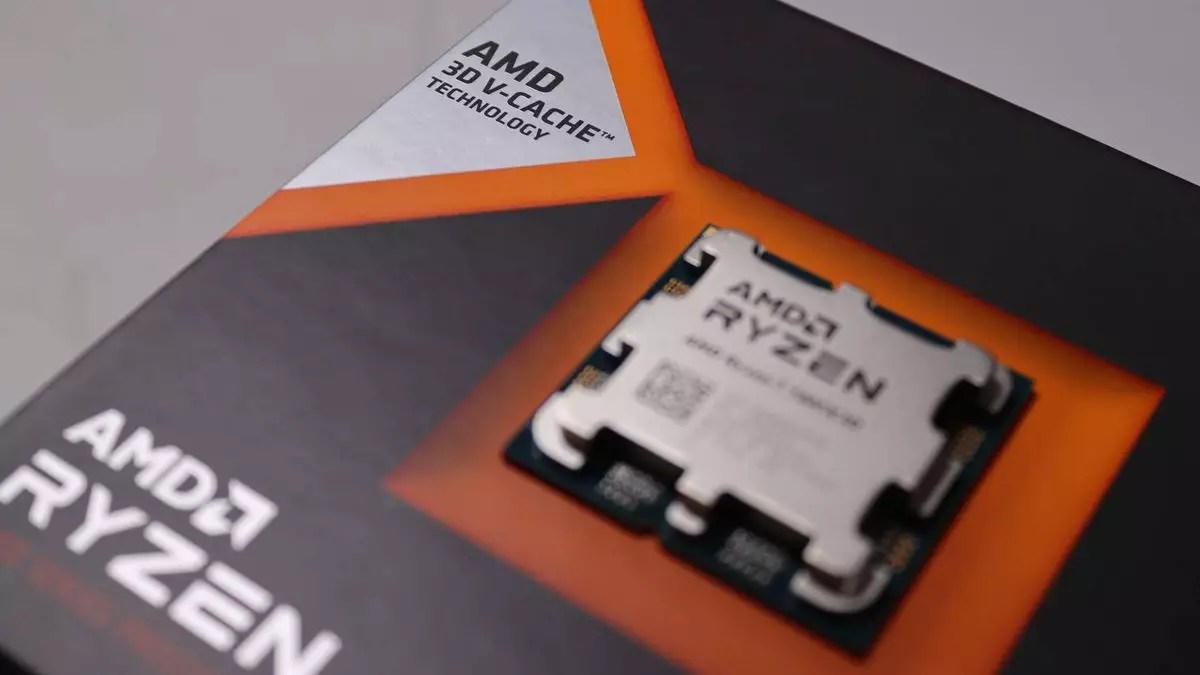AMD has officially launched its highly anticipated Ryzen 7 9800X3D, marking a notable advancement in its processor lineup. At a retail price of $479, this new offering from AMD comes with several innovations that promise to reshape the competitive landscape within the semiconductor industry. Teased earlier in June regarding its ‘unique differentiators’, the Ryzen 7 9800X3D’s distinctive design primarily lies in its cache configuration—representing a significant evolution from its predecessor, the Ryzen 7 7800X3D.
One of the most striking changes in the new 9800X3D is the redesign of its 3D V-Cache. Unlike its predecessor, the cache now sits beneath the processor rather than atop it. This alteration holds the potential to improve both thermal performance and overall processor efficiency. The 9800X3D boasts a base clock speed that’s 500 MHz higher than that of the 7800X3D and an increased boost clock of 200 MHz, indicating it is engineered to deliver improved performance right out of the box.
Despite these enhancements, it’s vital to note that the total cache remains the same at 64 MB, and other specs such as thermal design power (TDP) and core count have not been altered. However, the reconfiguration is expected to facilitate significantly better cooling, making it the first X3D processor with full overclocking capabilities. This is a departure from previous generations, which faced limitations in tuning due to thermal bottlenecks posed by high cache placements.
AMD’s decision to enable a fully unlocked X3D processor is a game-changer for enthusiasts and overclockers alike. Past iterations of X3D chips made overclocking a cumbersome and inherently unrewarding venture. Now, with the cache relocated, users may find it easier to manage temps and push their CPUs further, potentially unlocking significant performance gains. This new design finally meets the expectations held by avid technophiles who have long awaited the ability to freely extend the capabilities of their processors.
Nonetheless, while the technical specifications are promising, genuine advancements can only be validated post-launch through rigorous real-world testing. Users will be eagerly anticipating benchmarks that reveal the 9800X3D’s performance compared to not only its predecessor but also competing products, such as Intel’s Arrow Lake series. With a pricing increment of $30 compared to the 7800X3D at launch, the stakes are high for AMD to deliver a product that justifies this increased cost.
As the AMD Ryzen 7 9800X3D hits the market, it does so with a blend of innovation, strategic design, and the promise of competitive performance. AMD’s bold moves to alter the architecture of its CPU while maintaining core qualities of its predecessor could position it favorably against rivals. The landscape of high-performance computing continues to evolve, and all eyes will be on real-world results to determine if this new model meets the lofty expectations it has set for itself. With the right balance of pricing and performance, the Ryzen 7 9800X3D has the potential to redefine competitive gaming and computing products.


Leave a Reply